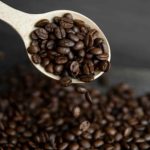1. Origins of Coffee and Early Processing Methods
Coffee’s journey begins in the highlands of Ethiopia, where legend tells of a goat herder named Kaldi who noticed his goats became unusually energetic after eating red berries from a certain tree. These berries would become what we now know as coffee beans. From Ethiopia, coffee spread to the Arab world, where it became an essential part of daily life and culture.
The Birthplace: Ethiopia
In ancient Ethiopia, coffee was not originally brewed as a drink. Instead, locals often ground the beans and mixed them with animal fat to form an energy-rich snack. Eventually, people began boiling the berries to create a kind of tea-like beverage. This early experimentation laid the foundation for future processing methods.
Coffee Spreads to the Arab World
By the 15th century, coffee had made its way across the Red Sea to Yemen. It was here that coffee began to be cultivated on a larger scale and where some of the earliest known coffee processing techniques were developed. The Arabs were pioneers in roasting and brewing coffee in ways that resemble today’s methods.
Traditional Arab Coffee Processing Techniques
The Arab world played a crucial role in standardizing how coffee was processed. In Yemen, the beans were typically dry-processed—meaning they were sun-dried with the fruit still attached before being hulled and roasted. This method produced rich, full-bodied flavors that are still appreciated today.
| Processing Method | Description | Region |
|---|---|---|
| Dry (Natural) Process | Coffee cherries are dried whole under the sun, then hulled to remove outer layers. | Yemen, Ethiopia |
| Early Roasting | Beans are roasted over open flames to develop flavor before brewing. | Arabian Peninsula |
Cultural Impact
Coffee quickly became more than just a drink—it was central to social gatherings and religious practices. Sufi monks used it to stay awake during long nights of prayer, while coffeehouses sprang up in cities like Mecca and Cairo, becoming hubs for conversation, music, and news sharing. These traditions helped spread both coffee consumption and its associated processing knowledge throughout the Middle East and eventually into Europe and beyond.
2. The Rise of Dry and Wet Processing
As coffee spread across the globe, farmers and producers began developing different ways to process the beans after harvesting. Two traditional methods emerged as the most widely used: dry processing (also known as natural) and wet processing (also called washed). Each method came to dominate in different regions, largely due to local geography and climate.
Dry Processing (Natural Method)
This is the oldest form of coffee processing and is still commonly used today, especially in regions with hot, dry climates. In this method, whole coffee cherries are spread out in the sun to dry for several weeks. As they dry, the fruit ferments slightly, which can give the coffee fruity or wine-like flavors.
Typical Regions:
- Ethiopia
- Brazil
- Yemen
Key Characteristics:
| Aspect | Description |
|---|---|
| Flavor Profile | Fruity, bold, sometimes funky or wild |
| Climate Needed | Hot and dry with consistent sunlight |
| Processing Time | Several weeks |
Wet Processing (Washed Method)
This method became popular later on and requires more water and infrastructure. After harvesting, the outer skin of the cherry is removed using machines. The beans are then fermented in water tanks to remove the mucilage before being dried. This results in a cleaner, brighter flavor profile that highlights the bean’s inherent characteristics.
Typical Regions:
- Colombia
- Costa Rica
- Kenya
Key Characteristics:
| Aspect | Description |
|---|---|
| Flavor Profile | Crisp, clean, with higher acidity |
| Climate Needed | Adequate rainfall and access to fresh water sources |
| Processing Time | A few days to a week depending on conditions |
The Role of Geography and Climate
The choice between dry and wet processing often comes down to environmental factors. In arid regions where water is scarce, dry processing is more practical and sustainable. On the other hand, wetter regions with more rainfall and better infrastructure can support wet processing more easily.
Why It Matters Today:
The way coffee is processed has a big impact on its final taste. Understanding these traditional methods helps us appreciate how much effort goes into each cup—and why coffees from Ethiopia might taste so different from those from Colombia.

3. Innovations in Coffee Processing
As specialty coffee continues to grow, so does the desire to explore new ways of processing coffee beans. Traditional methods like washed and natural processing have been around for centuries, but modern innovations are shaking things up and giving us a wider range of flavors than ever before. Two standout techniques that have gained popularity in recent years are honey processing and anaerobic fermentation.
Honey Processing: A Sweet Middle Ground
Honey processing comes from Central America, especially Costa Rica. Its a hybrid method that blends elements of both washed and natural processing. In this technique, the outer skin of the coffee cherry is removed, but some or all of the sticky mucilage (which looks and feels like honey) is left on the bean while it dries. The amount of mucilage left determines whether its called yellow, red, or black honey process.
| Type | Mucilage Left On | Flavor Profile |
|---|---|---|
| Yellow Honey | Minimal | Clean with subtle sweetness |
| Red Honey | Moderate | Sweeter with more body |
| Black Honey | Maximum | Rich, fruity, and complex |
Anaerobic Fermentation: Coffee in a Controlled Environment
Anaerobic fermentation is another cutting-edge method where coffee cherries or de-pulped beans are sealed in airtight tanks to ferment without oxygen. This controlled environment allows producers to fine-tune variables like temperature, time, and pressure—leading to bold and unique flavor profiles that stand out in cuppings and competitions.
Why It Matters
This method can bring out unexpected notes like tropical fruit, spices, or even bubblegum. Because it requires careful monitoring and expertise, its mostly used in high-end specialty coffee markets where quality and uniqueness are top priorities.
The Role of Experimentation in Flavor Diversity
Producers today are not afraid to experiment. Theyre blending traditional knowledge with scientific approaches to create coffees that surprise and delight drinkers. From carbonic maceration inspired by winemaking to yeast-inoculated fermentation techniques, these innovations are expanding the flavor spectrum available to roasters and consumers alike.
Examples of Experimental Techniques:
- Carbonic Maceration: Whole cherries fermented in CO₂-rich environments for juicy, wine-like flavors.
- Inoculated Fermentation: Adding specific yeasts or bacteria to guide fermentation toward desired flavors.
- Lactic Fermentation: Encouraging lactic acid bacteria growth for creamy textures and soft acidity.
This wave of innovation is helping define what makes specialty coffee so exciting: variety, creativity, and a never-ending quest for better taste.
4. Sustainability and Environmental Impact
As coffee processing techniques have evolved over time, there has been a growing focus on sustainability and reducing environmental harm. Traditional methods like the washed process use large amounts of water, while natural processes can lead to waste management issues. Today, modern coffee producers are actively working to make processing more eco-friendly by cutting down on water usage, managing waste more efficiently, and adopting practices that support sustainable farming.
Reducing Water Use
Water-intensive methods, such as the fully washed process, have long been criticized for their environmental footprint. In response, many producers are switching to eco-pulpers that require far less water. Some farms are also recycling water used during fermentation or shifting toward semi-washed or honey processes, which naturally use less water.
| Processing Method | Typical Water Usage | Sustainability Effort |
|---|---|---|
| Fully Washed | Up to 60 liters per kg of coffee | Being replaced with eco-pulpers and recycled systems |
| Honey Process | 10–15 liters per kg of coffee | Uses minimal water and retains flavor complexity |
| Natural Process | Very little water used | No washing stage; ideal for dry climates |
Managing Waste Effectively
Coffee pulp and wastewater can pollute nearby ecosystems if not handled properly. To counter this, many farms now compost pulp into organic fertilizer or convert it into bioenergy. Wastewater is often filtered through natural wetlands or treated with environmentally safe systems before being released.
Common Waste Solutions:
- Composting cherry pulp into soil nutrients
- Using leftover husks as fuel for drying machines
- Treating wastewater through filtration tanks or wetlands
Supporting Sustainable Farming Practices
Sustainability in coffee processing isn’t just about the factory steps—it’s about the whole farming ecosystem. More producers are implementing shade-grown systems to protect biodiversity, rotating crops to improve soil health, and using fewer chemical inputs. Certifications like Rainforest Alliance or Organic also encourage environmentally friendly practices from farm to cup.
Benefits of Sustainable Coffee Processing:
- Lowers environmental impact
- Improves long-term soil and plant health
- Supports fair labor and community development
By embracing these modern techniques, today’s coffee industry is taking big steps toward a greener future—one cup at a time.
5. Cultural and Regional Influences
Coffee isnt just a crop—its a reflection of the people, cultures, and environments that nurture it. Around the world, coffee-growing regions have developed their own unique processing techniques based on local traditions, available resources, and environmental factors. These methods not only impact the flavor profile of the final cup but also play a major role in shaping regional coffee identities.
How Environment Shapes Processing
Climate and geography often determine which processing methods are practical in a region. For example, in areas with limited water resources, such as Ethiopia or parts of Yemen, natural (dry) processing is more common. In contrast, wetter regions like Colombia tend to favor washed (wet) processing because water is more readily available.
| Country | Common Processing Method | Reason |
|---|---|---|
| Ethiopia | Natural/Dry | Low water access; traditional method |
| Colombia | Washed/Wet | Abundant rainfall; clean flavor preference |
| Brazil | Pulped Natural / Semi-washed | Large farms; efficiency and flavor balance |
| Indonesia | Wet-Hulled (Giling Basah) | High humidity; faster drying needed |
The Role of Culture and Tradition
Cultural preferences also influence how coffee is processed. In some countries, traditional methods have been passed down for generations and are deeply tied to community identity. For instance, in Yemen, coffee farmers still use age-old sun-drying techniques on rooftops, producing beans with deep fruity flavors.
Flavor Expectations by Region
Certain regions are known for specific taste profiles that result directly from their processing style:
- Ethiopian Naturals: Fruity and wine-like due to sun-drying with cherry intact.
- Colombian Washed Coffees: Bright and clean with citrus notes.
- Brazilians: Chocolatey and nutty from semi-washed processes.
- Sumatran Wet-Hulled: Earthy and full-bodied with herbal undertones.
A Living Tradition
Coffee processing isn’t static—it continues to evolve as farmers experiment with new methods while still respecting cultural roots. From fermentation tanks in Costa Rica to honey processing in Central America, innovation blends with tradition to shape the future of your morning cup.
6. The Influence of Processing on Flavor and the U.S. Specialty Market
When it comes to coffee, how the beans are processed after harvest plays a huge role in shaping their final flavor. In fact, many coffee lovers in the United States are becoming more aware of these differences and are even choosing their brews based on the processing method. From fruity naturals to clean washed coffees, let’s explore how processing impacts taste—and how American preferences are helping drive innovation in the specialty coffee scene.
How Processing Affects Flavor
Coffee beans aren’t really beans—they’re seeds from a fruit called a coffee cherry. After harvesting, that fruit has to be removed, and the way its done affects everything from sweetness to acidity and body. Here’s a simple breakdown:
| Processing Method | Flavor Profile | Typical Characteristics |
|---|---|---|
| Washed (Wet) | Clean, bright, high acidity | Lighter body, more focus on origin flavors |
| Natural (Dry) | Fruity, sweet, wine-like | Bigger body, intense aroma, potential for fermentation notes |
| Honey (Pulped Natural) | Balanced sweetness and acidity | Smooth mouthfeel, moderate complexity |
| Anaerobic Fermentation | Tropical, funky, complex | Experimental profiles with unusual notes |
The Rise of Flavor-Driven Consumers in the U.S.
The U.S. specialty coffee market has grown rapidly over the past decade. More consumers are exploring single-origin coffees and asking questions about where their beans come from—and how they’re processed. Coffee drinkers are no longer satisfied with generic dark roasts. Instead, they want unique tasting experiences that highlight specific flavors.
This shift in consumer behavior has encouraged roasters and importers to seek out coffees with distinct processing styles. For example, anaerobic fermentation—once considered too risky—is now a buzzword in cafes across cities like Portland, San Francisco, and New York. These complex flavor profiles appeal to adventurous palates looking for something new and exciting.
Innovation Driven by Demand
The demand for diverse flavors has pushed producers around the world to experiment with new techniques. In countries like Colombia and Costa Rica, farmers are investing in controlled fermentation tanks and drying beds to fine-tune their results. Even traditional methods like natural processing are being reimagined with better moisture control and timing.
This innovation isn’t happening in a vacuum—the feedback loop between U.S. roasters and origin producers is stronger than ever. Roasters often visit farms to collaborate on custom processes that match their customers’ flavor preferences. Its a win-win: farmers can charge premium prices for standout lots, while consumers enjoy an ever-expanding range of taste experiences.
The Future of Flavor Starts at the Farm
The way coffee is processed is no longer just a technical detail—it’s a major selling point for American consumers who care about quality and transparency. As palates evolve and curiosity grows, we can expect even more creative approaches to processing that push the boundaries of whats possible in a cup of coffee.

